Comments / Questions (105)
![]() Georgina wrote:
Georgina wrote:
Apologies if this has already been answered in a previous post. With the neck increases at the beginning, it says to do on the end of the row, then 2 increases as following A4. Are the increases then only still to be done at the end of the row? And the diagram shows the end of the rows only omitting to show the beginning of each row? I see the incerases taking place around the ch1 space but then there's no example of a ch3/ch4 after each turn? Thanks, Georgina
26.02.2024 - 23:52DROPS Design answered:
Dear Georgina, the first increase for neck is worked at the end of the row from right side on right front piece, but you will now increase on every row, this means at the beg of every row from wrong side just as shown in diagram A.4. See INCREASE TIP at the beg of the written pattern. Happy knitting!
27.02.2024 - 08:15
![]() Anna wrote:
Anna wrote:
Trots att jag har stor erfarenhet av virkning så är det här mönstret supper förvirrande och när jag läser de andra kommentarna så är jag inte den ända så ni kanske ska se över mönstret och se hur de kan bli mer lätt att förstå
05.09.2023 - 22:24
![]() Iridesca wrote:
Iridesca wrote:
Bonjour, En français il est dit de faire des brides, et en a anglais le mot employé est « treble », qui sont des doubles brides. Quel est la version « juste » ? Pour le dos, il est demandé au 2e rang de l’épaule d’augmenter en début de rang pour l’encolure, puis de faire 30 mailles en l’air en fin de rang pour l’encolure. Mais l’encolure ne peut pas être en début ET en fin de rang. Est-ce une erreur ? Merci
09.07.2023 - 19:11DROPS Design answered:
Bonjour, dans ce top on utilise des brides (treble crochet en anglais) et des doubles brides (double treble crochet en anglais). Les mailles en air devrait etre crochetees a la fin de l'epaule gauche du dos ('...ne pas oublier INFO CROCHET et crocheter 2 brides dans la dernière bride (= côté encolure) = 18-19-19-21-20-21 brides. Crocheter ensuite souplement 30-30-32-32-34-34 mailles en l'air pour l'encolure et joindre avec 1 maille coulée dans la dernière bride de l’épaule droite'...). Bon crochet!
25.07.2023 - 16:19
![]() Emily wrote:
Emily wrote:
Hoi, wat wordt er juist bedoeld met 1 stokje in de zijkant minderen (richting het armsgat)? Minder ik dan een stokje op het einde van de toer langs de kant van het armsgat? In het geval van maat M heb ik 6 stokjes gemeerderd voor het armsgat op 3 toeren, klopt dat? Dan begin ik al op de volgende toer richting het armsgat te minderen, klopt dat ook? Of moet ik nog steeds, terwijl ik minder in de zijkant, nog steeds blijven meerdere in het armsgat? Maar met hoeveel dan? Ik begrijp er niets van.
01.07.2023 - 13:35DROPS Design answered:
Dag Emily,
Dit minderen is in de zijnaad, dus zeg maar onder de oksel, aan de kant waar je eerst meerderde voor het armsgat. Pas als het meerderen voor het armsgat klaar is, minder je aan de zijkant. Bovenaan bij 'tip voor het minderen' staat beschreven hoe je dit kunt doen.
06.07.2023 - 21:16
![]() Lieke wrote:
Lieke wrote:
Right shoulder: On the next row work 2 double crochets in the first double crochet (towards the neck) and 1 double crochet in each of the remaining double crochets = 18-19-19-21-20-21 double crochets. Then work 30-30-32-32-34-34 loose chain stitches for the neck and 1 slip stitch in the last double crochet on the left shoulder. Cut and fasten the strand. --------> This seems incorrect, it sais both sides should be the neck side?
28.06.2023 - 10:59DROPS Design answered:
Dear Lieke, at the end of right shoulder, after you have worked the icnrease for neck, just chain the number of stitches for your size (it's for the neck on back piece) and join together with 1 slip stitch in the last dc worked towards neck on left shoulder, cut the yarn. Both shoulders are now joined together with a chain inbetween. You now work back piece starting with left shoulder. Happy crocheting!
28.06.2023 - 12:18
![]() Lieke wrote:
Lieke wrote:
Hoi! Ik snap het gedeelte bij de armhole niet. Eerst moet je 5 chains maken inclusief 3 om te draaien. Betekent dat dat je 5+3 moet maken of dat de 3 dus inderdaad inclusief zitten. Hierna moet je bij de 20 cm eerst je werk draaien en dan in de 4e chain verder haken. Moet je dan eerst chain 3 doen voor het draaistuk? Daarna moet ik nog een 1 chain verder haken. Welke moet ik dan insteken, is dat een van de chain 5 uit de vorige rij?
28.06.2023 - 10:00DROPS Design answered:
Dag Lieke,
Van de 5 lossen zijn er 3 om het werk mee te keren, na het keren haak je in de andere twee lossen, hierdoor heb je 3 stokjes gemeerderd (de eerste 3 lossen vervangen het eerste stokje). Bij 20 cm haak je inderdaad eerst 3 lossen om het werk te keren. In tip voor het meerderen (bovenaan) staat dat het eerste dubbele stokje vervangen wordt door 4 lossen. Op 20 cm haakje nadat je 4 lossen hebt gehaakt om mee te keren, een stokje in de 4e lossen.
29.06.2023 - 21:30
![]() Sara Gustafsson wrote:
Sara Gustafsson wrote:
Hej igen! Jag virkar storlek M och förstår inte hur jag ska öka för ärmhålet.
23.05.2023 - 21:36DROPS Design answered:
Hej, Du ökar mot ärmhålet när arbetet mäter 16 cm. Börja med 1 stolpe 1 gång (2 st i sista stolpen), sedan nästa gång du kommer till ärmhålet ökas det 2 maskor 1 gång (2 st i sista 2 st). Nu virkas det 5 lösa lm i slutet av nästa varvet från avigsidan (inklusive 3 luftmaskor att vända med) till ärmhål. Arbetet mäter ca 20 cm. Vänd och virka 1 stolpe i 4:e luftmaskan från nålen (= 2 stolpar), virka 1 stolpe i nästa luftmaska, och virka sedan varvet ut som förut.
24.05.2023 - 11:02
![]() Sara Gustafson wrote:
Sara Gustafson wrote:
Hej! Jag förstår inte hur jag ska öka för ärmhål.
22.05.2023 - 21:39DROPS Design answered:
Hej Sara, hvilken størrelse virkar du?
23.05.2023 - 11:42
![]() Nadja Melchiorsen wrote:
Nadja Melchiorsen wrote:
I svarede mig, men har ikke svaret på mit spørgsmål. Jeg forstår godt, at jeg skal hækle hver skulder for sig, og derefter hækle dem sammen. Men jeg synes altså de vender forkert. På højre skulder skal jeg starte med udtagning, to masker i en, og i skriver, at det er mod halsen. I den anden ende skal jeg hækle lm som netop bliver halsen. De skal så forbindes med udtagningen på venstre skulder, hvor udtagningen så Er mod halsen. HVAD SKAL VENDES OM, NOGET ER GALT.
17.05.2023 - 20:39DROPS Design answered:
Hej Nadja, ja det stemmer, du er nødt til at hækle hele rækken tilbage først, inden du hækler rækken med de løse luftmasker i midten. Da vil du også have lige mange rækker på højre og venstre rygstykke. Vi skal skrive den række tydeligere ind i opskriften. Du er nu tilbage på venstre rygstykke og behøver derfor ikke klippe tråden (det retter vi også) - Skriv gerne dine funderinger her i stedet for på FB, da har vi større chance for at hjælpe dig og rette eventuelle fejl - Rigtig god dag! :)
23.05.2023 - 09:14
![]() Nadja Melchiorsen wrote:
Nadja Melchiorsen wrote:
Synes virkelig, at det er en forvirrende opskrift, men nu er Jeg er ved skulder og bagstykke. Der skal to masker i samme maske ind mod halsen, det forstår jeg, men hvordan skal de 30 lm så sidde på den modsatte side af højre stykke? og forbindes med skulderen på venstre stykke? Så bliver de to masker i en (mod hals) altså mod ærme og ikke hals. Hvorfor skal tråden klippes men ikke hæftes på venstre skulder?
15.05.2023 - 17:27DROPS Design answered:
Hej Nadja, venstre og højre skulder bagpå hækler du hver for sig først og så hækler du dem sammen fra hvor der står RYGSTYKKE: Start på venstre skulder ...
17.05.2023 - 08:06
Beach Ballet#beachballetwrap |
||||||||||||||||||||||||||||||||||||||||
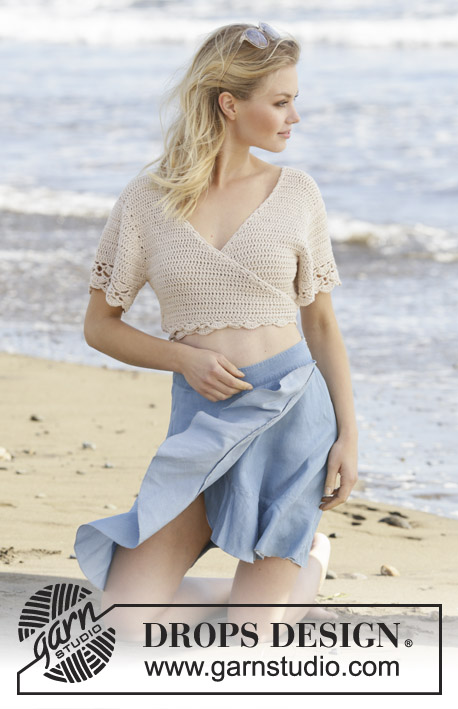 |
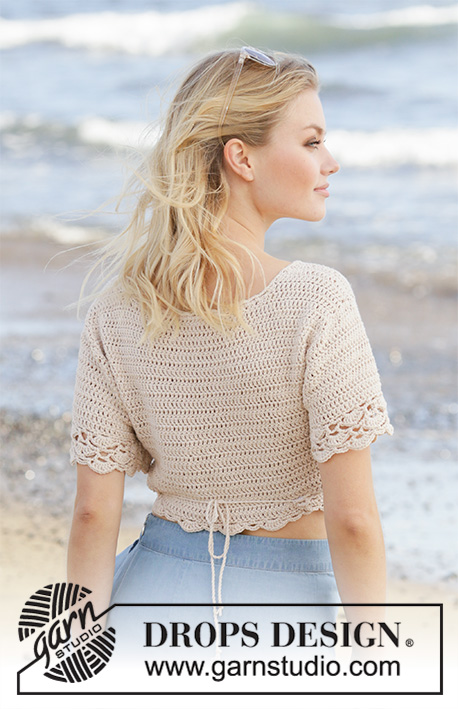 |
|||||||||||||||||||||||||||||||||||||||
Crocheted top in DROPS Belle. The piece is worked with wrap-around style, double crochets and fans. The piece is worked top down. Sizes S - XXXL.
DROPS 199-47 |
||||||||||||||||||||||||||||||||||||||||
|
------------------------------------------------------- EXPLANATIONS FOR THE PATTERN: ------------------------------------------------------- CROCHET INFORMATION: First double crochet at the beginning of each row is replaced by 3 chain stitches. INCREASE TIP: Increase 1 double crochet by working 2 double crochets in same double crochet. Increase 2 stitches by working as shown in A.4 on right front piece and A.5 on left front piece – NOTE: First treble crochet at beginning of each row is replaced by 4 chain stitches. DECREASE TIP (for sides): Decrease 1 double crochet by working 2 double crochets together as follows: * Make 1 yarn over, insert hook through next stitch, pick up strand, 1 yarn over and pull strand through the first 2 loops on hook *, work from *-* 1 more time, make 1 yarn over and pull strand through all 3 loops on hook(= 1 double crochet decreased). PATTERN: See diagrams A.1 to A.7. (A.6 shows how rounds start and finish). INCREASE/DECREASE TIP (evenly spaced): To work out how to decrease/increase evenly, count the total number of stitches, (e.g. 68 stitches) and divide by number of decreases/increases to be made (e.g. 4) = 17. In this example, decrease by working together each 16th and 17th stitch. When increasing work 2 double crochets in each 17th double crochet. ------------------------------------------------------- START THE PIECE HERE: ------------------------------------------------------- TOP - SHORT OVERVIEW OF THE PIECE: Front and back pieces are worked back and forth separately, top down. The pieces are sewn together, and then you work fans along the bottom edge. The sleeves are worked back and forth, top down as far as the armholes, and then worked in the round. A small decorative edge is worked along the front pieces/back piece/neck. The top is wrapped around by placing the right front piece on top of the left front piece and then tying around the waist. RIGHT FRONT PIECE: Work 21-22-22-25-24-25 chain stitches with hook size 4 mm = US 6 and Belle. Turn and work 1 double crochet in the 4th chain stitch from the hook (= 2 double crochets), work 1 double crochet in each of the next 5-6-6-3-2-3 chain stitches, * skip 1 chain stitch, work 1 double crochet in each of the next 5 chain stitches *, work from *-* to end of row = 17-18-18-20-19-20 double crochets. Work a total of 6-7-8-6-7-6 rows with 1 double crochet in each double crochet – read CROCHET INFORMATION and REMEMBER THE CROCHET GAUGE! Then increase to neck and armholes at the same time as follows: NECK: On the next row (= from the right side) start to increase for neck at the end of the row – read INCREASE TIP. Increase by 1 double crochet a total of 2-3-3-0-1-1 times, then increase 2 stitches (as shown in A.4) a total of 19-19-20-26-26-29 times (= a total of 40-41-43-52-53-59 double crochets increased for neck). ARMHOLE: When the piece measures 16-16-16-17-16-14 cm = 6¼"-6¼"-6¼"-6¾"-6¼"-5 172" start to increase for armhole – read INCREASE TIP. Increase 1 double crochet 0-1-1-1-0-1 time, then increase 2 stitches 0-1-2-3-5-7 times. At the end of the first row from the wrong side work 5-5-6-7-8-8 loose chain stitches (including 3 chain stitches to turn with) for the armhole (= a total of 3-6-9-12-16-21 double crochets increased for armhole). The piece measures approx. 19-20-21-22-23-24 cm = 7½"-8"-8¼"-8¾"-9"-9½". Turn and work 1 double crochet in the 4th chain stitch from the hook (= 2 double crochets), work 1 double crochet in each of the next 1-1-2-3-4-4 chain stitches and work to end of row as before. On the next row decrease 1 double crochet in the side (i.e. towards the armhole) – read DECREASE TIP. Decrease like this every 2nd row a total of 4 times (=4 double crochets decreased), the increases for neck continue as before. When all the decreases (towards the side) and increases (for neck and armhole) are finished there are 56-61-66-80-84-96 double crochets on the last row. The piece measures approx. 30-32-34-36-38-40 cm = 11¾"-12½"-13⅜"-14¼"-15"-15¾" from the shoulder down. Cut and fasten strand. LEFT FRONT PIECE: Work 21-22-22-25-24-25 chain stitches with hook size 4 mm = US 6 and Belle. Turn and work 1 double crochet in the 4th chain stitch from the hook (= 2 double crochets), work 1 double crochet in each of the next 5-6-6-3-2-3 chain stitches, * skip 1 chain stitch, work 1 double crochet in each of the next 5 chain stitches *, work from *-* to end of row = 17-18-18-20-19-20 double crochets. Work a total of 6-7-8-6-7-6 rows with 1 double crochet in each double crochet – read CROCHET INFORMATION and REMEMBER THE CROCHET GAUGE! Then increase to neck and armholes at the same time as follows: NECK: On the next row (= from the right side) start to increase for neck at the beginning of the row – remember INCREASE TIP. Increase by 1 double crochet a total of 2-3-3-0-1-1 times, then increase 2 stitches (as shown in A.5) a total of 19-19-20-26-26-29 times (= a total of 40-41-43-52-53-59 double crochets increased for neck). ARMHOLE: When the piece measures 16-16-16-17-16-14 cm = 6¼"-6¼"-6¼"-6¾"-6¼"-5½" start to increase for the armhole – read INCREASE TIP. Increase 1 double crochet 0-1-1-1-0-1 time, then increase 2 stitches 0-1-2-3-5-7 times. At the end of the first row from the right side work 5-5-6-7-8-8 loose chain stitches (including 3 chain stitches to turn with) for the armhole (= a total of 3-6-9-12-16-21 double crochets increased for the armhole). The piece measures approx. 19-20-21-22-23-24 cm = 7½"-8"-8¼"-8¾"-9"-9½". Turn and work 1 double crochet in the 4th chain stitch from the hook (= 2 double crochets), work 1 double crochet in each of the next 1-1-2-3-4-4 chain stitches and work to end of row as before. On the next row decrease 1 treble crochet in the side (i.e. towards the armhole) – remember DECREASE TIP. Decrease like this every 2nd row a total of 4 times (=4 double crochets decreased), the increases for neck continue as before. When all the decreases (towards the side) and increases (for neck and armhole) are finished there are 56-61-66-80-84-96 double crochets on the last row. The piece measures approx. 30-32-34-36-38-40 cm = 11¾"-12½"-13⅜"-14¼"-15"-15¾" from the shoulder down. Cut and fasten strand. BACK PIECE: RIGHT SHOULDER: Work 21-22-22-25-24-25 chain stitches with hook size 4 MM = US 6 and Belle. Turn and work first row from wrong side as follwos: work 1 double crochet in 4th chain stitch from hook (= 2 double crochets), then work 1 double crochet in each of the next 5-6-6-3-2-3 chains, * skip 1 chain stitch, crochet 1 double crochet in each of the next 5 chain stitches*, repeat from *-* to end of row = 17-18-18-20-19-20 double crochets. Cut the strand and put aside LEFT SHOULDER: Work 21-22-22-25-24-25 chain stitches with hook size 4 MM = US 6 and Belle. Turn and work first row from wrong side as follows: 1 double crochet in 4th chain stitch from the hook (= 2 double crochets), work 1 double crochet in each of the next 5-6-6-3-2-3 chain stitches, * skip 1 chain stitch, work 1 double crochet in each of the next 5 chain stitches *, work from *-* to end of row = 17-18-18-20-19-20 double crochets. On the next row (from right side), crochet 1 double crochet in each double crochet until 1 double crochet remains and work 2 double crochets in the last double crochet (towards the neck = 18-19-19-21-20-21 double crochets for left shoulder. Then crochet loosely 30-30-32-32-34-34 chain stitches for neck, take right shoulder and starting from right side, crochet 1 double crochet in each of the next 16-17-17-19-18-19 double crochets (= 18-19-19-21-20-21 double crochets for right shoulder). BACK PIECE: Start on left shoulder (from wrong side) and work 1 double crochet in each of the first 18-19-19-21-20-21 double crochets, work 1 double crochet in each of the 30-30-32-32-34-34 chain stitches in the neck and 1 double crochet in each of the 18-19-19-21-20-21 double crochets on right shoulder = 66-68-70-72-74-76 double crochets. Work 1 double crochet in each double crochet until the piece measures 16-16-16-17-16-14 cm = 6¼"-6¼"-6¼"-6¾"-6¼"-5½". Now start to increase for the armholes on each side of the piece as follows: Increase 1 double crochet 0-1-1-1-0-1 times, then 2 double crochets 0-1-2-3-5-7 times = 66-74-80-86-94-106 double crochets. Cut the strand. Work the next row as follows: Work 3-3-4-5-6-6 loose chain stitches for the armhole, 1 double crochet in each double crochet and finish with 5-5-6-7-8-8 loose chain stitches (including 3 chain stitches to turn with) for the armhole = 72-80-88-96-106-118 stitches. Turn and work 1 double crochet in 4th chain stitch from hook (= 2 double crochets), work 1 double crochet in each of the next 1-1-2-3-4-4 chain stitches, 1 double crochet in each double crochet and 1 double crochet in each of the 3-3-4-5-6-6 last chain stitches = 72-80-88-96-106-118 double crochets. On the next row decrease 1 double crochet on each side of the piece – remember DECREASE TIP. Decrease like this every 2nd row a total of 4 times = 64-72-80-88-98-110 double crochets. Continue working until you have the same number of rows as on the front pieces, i.e. the piece measures approx. 30-32-34-36-38-40 cm = 11¾"-12½"-13⅜"-14¼"-15"-15¾" from the shoulder down. Cut and fasten strand. ASSEMBLY: Sew shoulder seams and side seams - sew in outermost loop of outermost stitch so the seam is flat. FAN-EDGE (bottom edge): = 176-194-212-248-266-302 double crochets on last row (both front and back pieces). Start on right front piece from the wrong side and work as follows: Work A.1 over the first 4 double crochets, A.2 until there is 1 double crochet left (= 19-21-23-27-29-33 repeats of 9 double crochets) and finish with A.3 over the last double crochet. When A.1 to A.3 have been completed, cut and fasten the strand. DECORATIVE EDGE (along front pieces and back piece/neck): Start at bottom of tip on right front piece from the right side and fasten the strand with 1 slip stitch in the first stitch. Work 1 single crochet around the first row, * 3 chain stitches, 1 single crochet around next row *, work from *-* along the whole front piece, neck and down the left front piece, finishing at the tip. Cut and fasten the strand. SLEEVE: The sleeve is worked top down, starting with the sleeve cap. Work 42-48-44-45-42-46 chain stitches (including 3 chain stitches to turn with) with hook size 4 mm = US 6 and Belle. Turn and work 1 double crochet in 4th chain stitch from the hook (= 2 double crochets), work 1 double crochet in each of the next 2-1-4-5-2-6 chain stitches, * skip 1 chain stitch, work 1 double crochet in each of the next 5 chain stitches *, work from *-* to end of row = 34-39-36-37-34-38 double crochets. On the next row increase 2 double crochets on each side of the piece (increase 2 double crochets by working 3 double crochets in same double crochet). Increase like this a total of 7-7-8-8-9-9 times on each side = 62-67-68-69-70-74 double crochets. Cut the strand. Work 3-3-4-5-6-6 loose chain stitches for armhole, work 1 double crochet in each of the 62-67-68-69-70-74 double crochets and finish with 3-3-4-5-6-6 loose chain stitches for armhole. Then join the piece with 1 slip stitch in the first chain stitch = 68-73-76-79-82-86 stitches. Now work in the round as follows: Work A.6 (shows how rounds start and finish), repeat A.7 to end of round (= 7-8-8-9-9-10 repeats of 9 double crochets) – AT THE SAME TIME on the first round adjust the number of stitches by increasing/decreasing to 64-73-73-82-82-91 double crochets – read INCREASE/DECREASE TIP. Continue until A.6 and A.7 have been completed. Cut and fasten strand. Work the other sleeve in the same way. ASSEMBLY: Sew in sleeves - sew in outermost loop of outermost stitch so the seam is flat. TWISTED CORD: Cut 2 strands measuring 6 metres = 240" of Belle. Twist them together until they begin to resist, fold double and they will continue to twist. Tie a knot in each end. Tie one end to the tip of the right front piece. Make 1 more cord in the same way and tie to the tip of the left piece. |
||||||||||||||||||||||||||||||||||||||||
Diagram explanations |
||||||||||||||||||||||||||||||||||||||||
|
||||||||||||||||||||||||||||||||||||||||
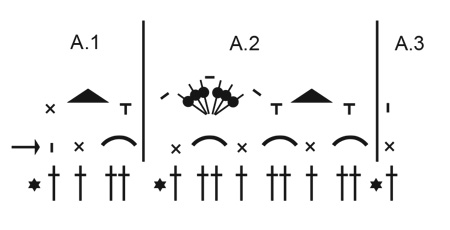 |
||||||||||||||||||||||||||||||||||||||||
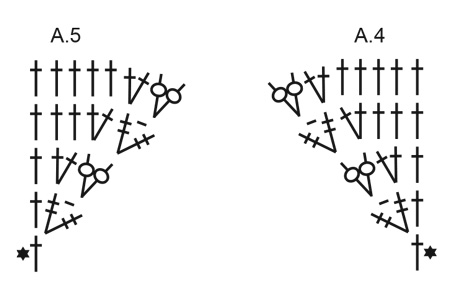 |
||||||||||||||||||||||||||||||||||||||||
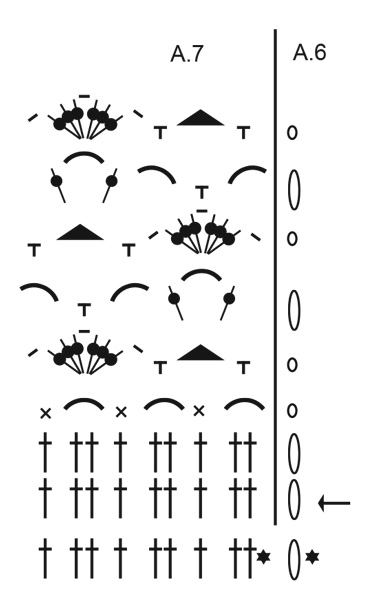 |
||||||||||||||||||||||||||||||||||||||||
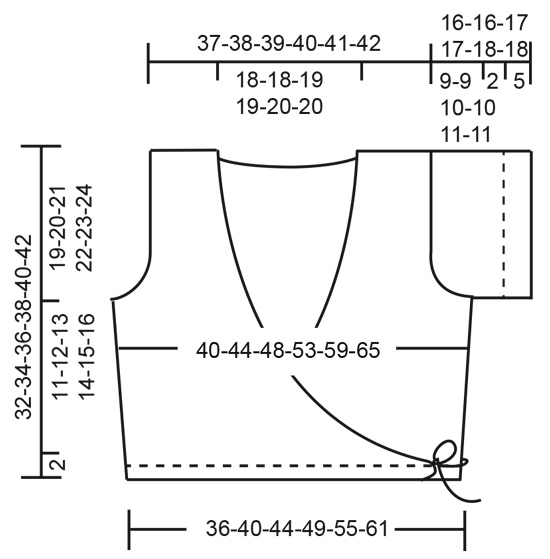 |
||||||||||||||||||||||||||||||||||||||||
Have you finished this pattern?Tag your pictures with #dropspattern #beachballetwrap or submit them to the #dropsfan gallery. Do you need help with this pattern?You'll find 12 tutorial videos, a Comments/Questions area and more by visiting the pattern on garnstudio.com. © 1982-2025 DROPS Design A/S. We reserve all rights. This document, including all its sub-sections, has copyrights. Read more about what you can do with our patterns at the bottom of each pattern on our site. |
||||||||||||||||||||||||||||||||||||||||








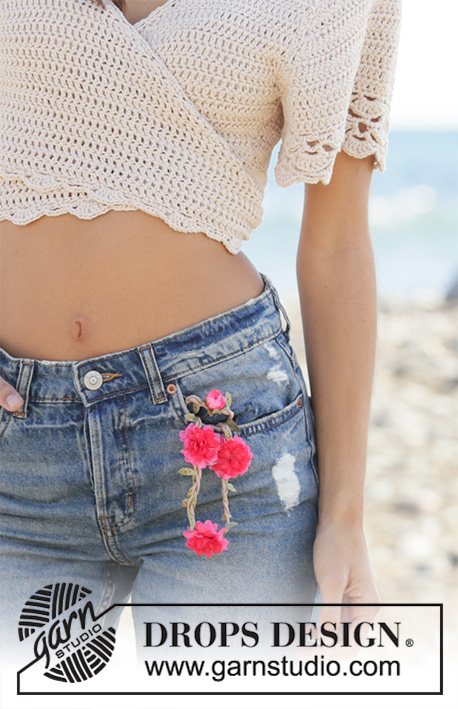
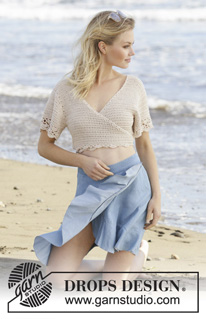
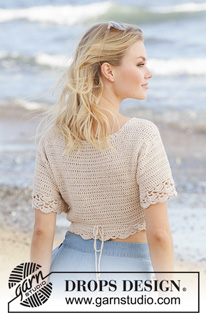
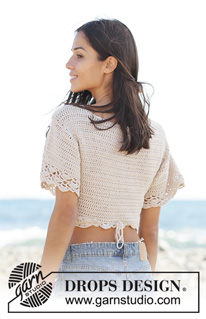
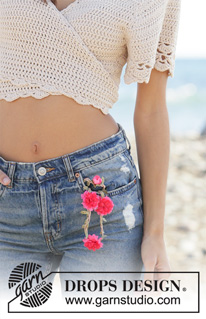






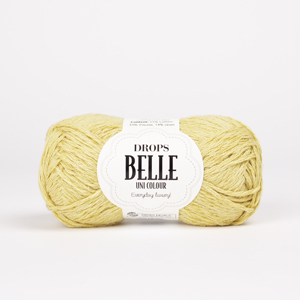




























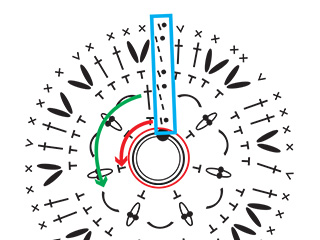







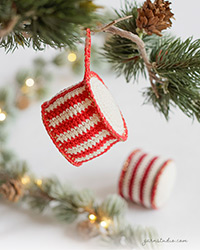





Post a comment to pattern DROPS 199-47
We would love to hear what you have to say about this pattern!
If you want to leave a question, please make sure you select the correct category in the form below, to speed up the answering process. Required fields are marked *.